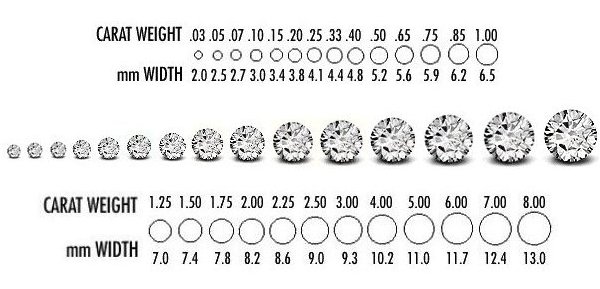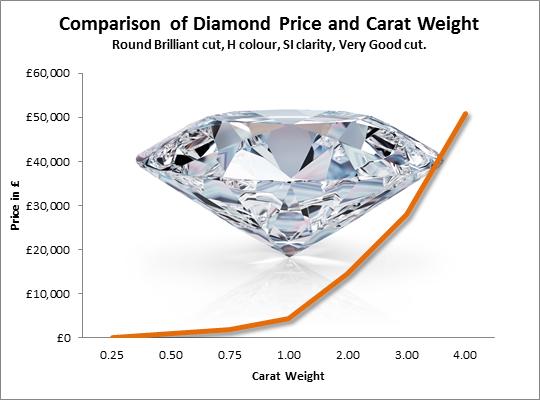Carat
The carat refers to the weight of the diamond rather than its size as is commonly confused. The word carat finds its origins in Ancient Greece, deriving from the Greek word ‘keration’, which translates to ‘Fruit of the Carob’. The seeds of the carob tree have a uniform size and so were used to measure small quantities of precious gemstones. The average weight of a carob seed is 200 milligrams, or 0.2 grams, which is the measurement still used today for a carat weight of diamond.
This measurement can be divided into “points”, where one point in equal to 0.01 carat. There are industry standards for the dimensions of each shape of diamond at each weight but it is not an exact science. Have a look at the ‘Cut‘ page for more information on this. The key message is to not rely on carat weight alone to work out the visual size of a stone.
The setting style and colour of metal the stone is set in can play visual tricks with the eye as to how large a stone is. The shape of the stone can also make a stone appear a larger carat weight; longer shapes such as marquise or pear are slimmer at their points so the weight is spread out over a larger surface area. Have a look at ‘Shape‘ page for more information on these cuts.
The carat of a stone plays a big part in its overall cost. As a general rule, the higher the carat weight, the higher price. Larger diamonds are much more scarce and, therefore, demand a higher premium.
When I talk to clients about stones in their jewellery, diamonds or not, I tend to discuss them in mm measurement rather than carat. This is because the appearance is more relevant in terms of how the piece looks than the weight of the stone.
You can read more about the Carat weight and the 4 C’s in my blog.


